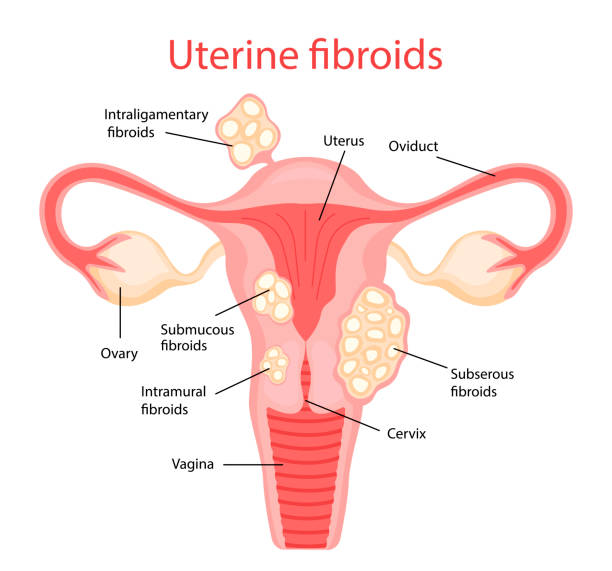A myomectomy is a surgical procedure to remove uterine fibroids, benign tumors that often appear during childbearing years. This blog discusses the first period after myomectomy and post-surgery changes with insights from Dr. Himali Maniar, an eminent gynecologist in South Bopal, Ahmedabad.

Dr. Maniar, says:
“Myomectomy removes uterine fibroids while preserving the uterus. It is a preferred option for women who wish to maintain their fertility. A myomectomy can significantly improve quality of life, alleviating symptoms such as heavy menstrual bleeding and pelvic pain while supporting future fertility aspirations.”
Note: When fibroid pain becomes intolerable, and symptoms are no longer manageable with medical treatments, Dr. Maniar conducts a laparoscopic hysterectomy. This procedure permanently resolves the issue by removing the uterus.

When Should I Expect My First Period After Myomectomy?
 A myomectomy is a surgical procedure to remove uterine fibroids, benign tumors that often appear during childbearing years. The first period after myomectomy depends on several factors including the type of surgery you had, your overall health, and your individual healing process.
A myomectomy is a surgical procedure to remove uterine fibroids, benign tumors that often appear during childbearing years. The first period after myomectomy depends on several factors including the type of surgery you had, your overall health, and your individual healing process.
Dr. Himali Maniar, an eminent gynecologist in South Bopal, Ahmedabad, says:
“Myomectomy removes uterine fibroids while preserving the uterus. It is a preferred option for women who wish to maintain their fertility. A myomectomy can significantly improve quality of life, alleviating symptoms such as heavy menstrual bleeding and pelvic pain while supporting future fertility aspirations.”
Note: When fibroid pain becomes intolerable, and symptoms are no longer manageable with medical treatments, Dr. Maniar conducts a laparoscopic hysterectomy. This procedure permanently resolves the issue by removing the uterus.
Wondering how your periods might change after surgery? Here’s what you should know.
How Will Myomectomy Affect My Periods?

After a fibroid surgery, many women experience changes in their menstrual cycle.
Dr. Himali Maniar, a trusted name for myomectomy treatment in Bopal, Ahmedabad, notes:
“Initially, your menstrual cycle, usually the first period after myomectomy, might be irregular or heavier due to the uterus healing. Further alterations can range from reduced pain and lighter bleeding to changes in cycle length. Additionally, some women may notice an improvement in fertility and a reduction in symptoms such as pelvic pain and pressure. Over time, cycles usually return to normal.
Maintaining a healthy lifestyle, including a balanced diet and regular exercise, can also aid recovery. If you experience severe pain, excessive bleeding, or signs of infection, please seek medical attention promptly.”
Body Changes After Myomectomy
After undergoing a myomectomy, several changes can occur as your body heals and adjusts.
Menstrual Changes:
The first period after fibroid removal may begin earlier or later than expected. It might also be heavier and more painful than you’re accustomed to. However, going forward, you will notice a significant improvement in menstrual symptoms. Periods may become lighter and less painful, which is a relief for those who suffer from heavy and uncomfortable menstrual flows due to fibroids.
Post-Surgical Symptoms:
In the weeks following surgery, it’s common to experience some spotting or light bleeding. Some women also report mild to moderate pelvic cramping as the uterus heals.

Hormonal Adjustments:
The removal of fibroids can temporarily affect the body’s hormonal balance. This might manifest as mood swings or other emotional responses as the body’s endocrine system adjusts.
Scar Tissue Development:
Scar tissue, or adhesions, can form at the site of surgery. While not always problematic, in some cases, they can lead to discomfort or other issues like fertility complications.
Changes in Fertility:
Fibroid removal can increase the chances of conception for those undergoing myomectomy to improve fertility. However, the impact varies depending on the fibroids’ location and size before removal.
Physical Recovery:
The body needs time to heal from the incisions and any internal changes. This period might involve restrictions on physical activities to prevent stress on the surgical site.
Understanding these changes can help manage expectations and contribute to a smoother recovery.
Are you concerned by the changes or symptoms after myomectomy? Please consult a gynecologist for personalized insights, advice, and peace of mind.
Post-Fibroid Surgery Precautions: What You Need to Know
Post-myomectomy, taking certain precautions is crucial for a smooth and safe recovery:

- Allow your body ample time to heal by resting and avoiding strenuous activities.
- Do not lift anything heavier than 10 pounds for at least six weeks to prevent strain on the surgical site.
- Avoid sexual intercourse for the time recommended by your healthcare provider, typically about six weeks, to allow internal healing.
- Keep the surgical site clean to prevent infection.
- Follow your doctor’s advice on when it’s safe to shower or bathe, especially regarding submerging the wound underwater.
- Keep an eye on the incision site for signs of infection, such as redness, swelling, or unusual discharge.
- Follow your doctor’s instructions for pain management, which may include prescribed medication or over-the-counter pain relievers.
- Stay hydrated and eat a balanced fiber-rich diet to help with bowel movements and recovery.
- Attend all scheduled follow-up appointments with your gynecologist to monitor your healing process and address concerns.
Conclusion
Recovering from a myomectomy involves understanding the changes your body undergoes and following specific post-operative precautions. Monitoring your menstrual cycle, being aware of body changes, and adhering to your doctor’s guidance are essential for a healthy recovery. With proper care and consultation, you can navigate post-surgery with confidence.
Do you have concerns about your recovery or long-term reproductive health? Consulting an experienced gynecologist can provide valuable support and clarity.
Remember, your health journey is unique—seeking guidance ensures optimal recovery and well-being.
FAQ
How long does the myomectomy surgery take?
The duration of a myomectomy can vary depending on the number and size of fibroids being removed, but it generally takes between 1 to 3 hours.
Can myomectomy be performed laparoscopically?
Yes, Dr. Maniar employs cutting-edge surgical techniques and state-of-the-art tools to perform the procedure. She utilizes a laparoscopic approach, making small incisions in the abdomen to access the uterus. Carefully, she excises the fibroids while maintaining the structural integrity of the uterus.
What is the recovery time for a myomectomy?
Recovery time varies; most patients can resume normal activities within 2-4 weeks, but full recovery may take up to 6-8 weeks.
What should I expect during the myomectomy recovery process?
During recovery, you may experience some pain and discomfort, which can be managed with medication. It’s important to avoid heavy lifting and rigorous activity to allow the surgical site to heal properly. Light walking is encouraged to help prevent blood clots.
Can fibroids reoccur after a myomectomy?
Yes, while a myomectomy removes existing fibroids, new fibroids can develop over time, which might require further treatment.
Is a myomectomy considered a major surgery?
Yes, a myomectomy is a major surgical procedure as it involves making incisions in the uterus to remove fibroids, typically under general anesthesia.
Will a myomectomy affect my ability to get pregnant?
A myomectomy can improve fertility by removing fibroids that may be causing infertility. However, the outcome varies depending on individual circumstances and the specifics of the fibroid removal.
What are the risks associated with a myomectomy?
Common risks include bleeding, infection, scar tissue formation, and rarely, damage to surrounding organs. Each patient’s risk can vary based on the complexity of the surgery and individual health factors.

